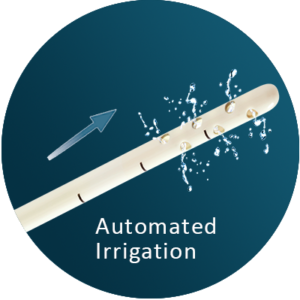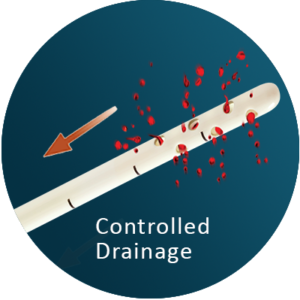When the brain is disturbed by traumatic brain injury, infection, or some other incident, its ability to autoregulate is often impacted, and the intracranial pressure (ICP) exerted by brain tissue, cerebral spinal fluid (CSF), and blood can increase to unsafe levels. When this occurs, excess fluid must be drained to reduce the swelling of the brain and stabilize the patient.



Drainage systems, such as external ventricular drains (EVDs), are vital tools in managing a patient’s ICP during these emergency situations. By draining excess fluid, an EVD plays a critical role in the recovery of these critically ill patients. Unfortunately, EVDs are generally primitive systems that rely solely on gravity alone, and as a result, they have been plagued by blockages that can lead to inefficient drainage and other complications.
IRRAflow® addresses this inefficient drainage by returning control of the drainage process to the clinician. Dynamic fluid management takes place in a closed-circulatory system where pressure is continuously monitored and adjusted through cyclical fluid irrigation and drainage using a unique dual-lumen catheter design. As a result, the drainage rate can be actively guided and optimized for each patient.
Learn more about how IRRAflow can improve intracranial bleeding patient outcomes.